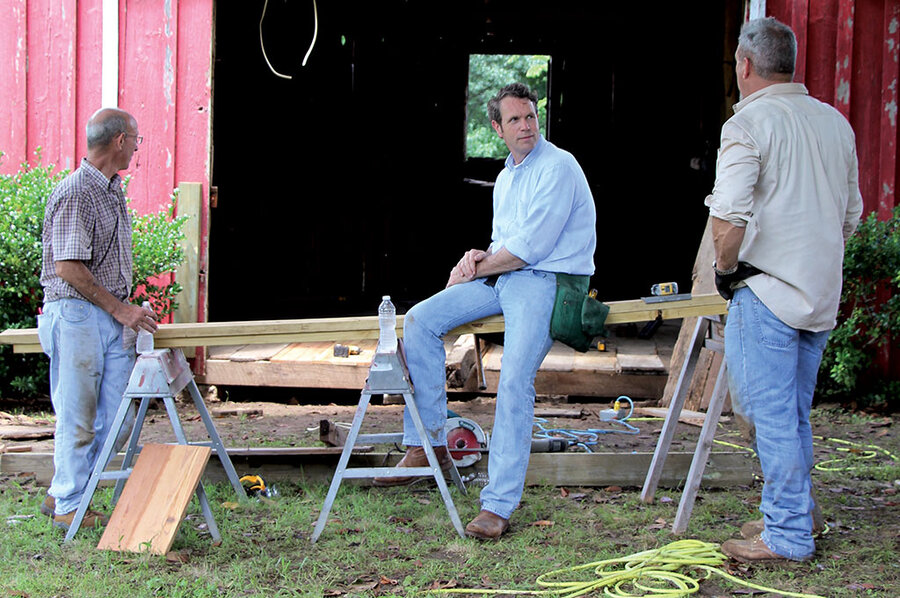Old methods best for old buildings, says TV star
Loading...
You are no doubt familiar with people who say they can communicate with animals, so-called animal whisperers and psychics. But what about someone who can speak to houses?
Brent Hull, author and star of the History Channel’s series “Lone Star Restoration,” has devoted his life to dialing into a deeper connection with structures.
“There’s no sense of craft anymore,” Mr. Hull said at a recent event at Boston’s North Bennet Street School – his alma mater. “Everything is about cheapness and no thought is given to longevity.”
Hull started his company, Hull Historical, in his brother’s garage. The company has since received recognition including the John Staub Award from the Institute of Classical Architecture & Art. He attributes his success to cultivating craftspeople who, like him, are motivated to respect and cherish the histories of buildings. Today the company specializes in rejuvenating structures, from Texas courthouses to old train cars. “It’s all about historical integrity,” Hull told The Christian Science Monitor. “The question is not about what’s cheapest or fastest, it’s about what a building deserves.” Hull isn’t trying to reinvent the wheel. The methods and tools he uses are old-fashioned practices, methods that he feels are becoming a lost art.
His work inspired “Lone Star Restoration,” a show on the History Channel that debuted last fall and follows Hull and his team as they restore buildings throughout the Texas area. Hull has also written three books, but his most gratifying moments, he says, are still in his small Fort Worth shop. Hull says that designing and refitting windows in the Texas State Capitol was one of his most fulfilling projects.
“It’s the most important building in the state,” he says, “so the experience was humbling.”
Hull hopes to rekindle the more traditional aspects of practices like woodworking in the builders and contractors of tomorrow. “Every building has a story,” Hull says, “and it’s our job to find it.”








